Field Trip "Art and common good", November 13th/14th, 2024
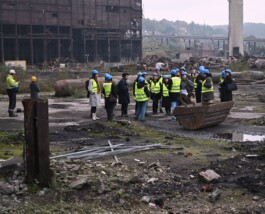
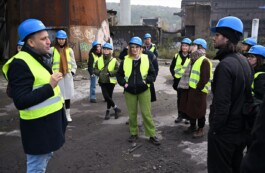
Date
November 13th/14th, 2024
Industrial history on the one hand and an vibrant art scene on the other – our third field trip took us to the Belgian city of Liège. A place that, in the 18th and 19th century, was in the heart of the industrial revolution on the European continent. Industry made Liège a wealthy town, its smelters, furnaces and factories once were considered to be the city’s true cathedrals. Then, in the 1980s, decay set in. The companies moved away, leaving Liège heavily polluted and many residents unemployed. Until today, abandoned factories characterize the cityscape, and a kind of working-class mentality still seems to prevail. An aspect that is also reflected in Liège’s art scene, the existing cooperatives and the artists’ associations, which jointly manage studio spaces and workshops.
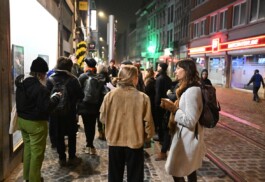
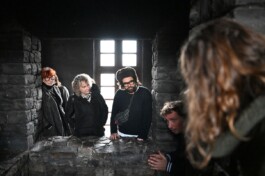
November 13th
We started our trip at Jacadi, a workspace of the artists cooperation CRC. Maxime Moinet and Julie Hanique gave us a warm welcome and introduced us to the ways of operating of this artists cooperation and the different needs it tries to meet within the local scene. Afterwards, we visited the Musée de la Métallurgie, to see some of the metalworking history of Liège. Apart from an introduction into the industrial past of Liege we also learned how sensitive this industrial past still is in the area. Industry shaped the face of the city in the past centuries, but this doesn’t mean that this history is necessarily getting much attention or care.
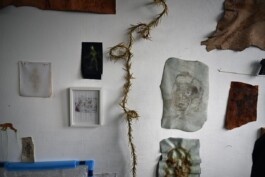
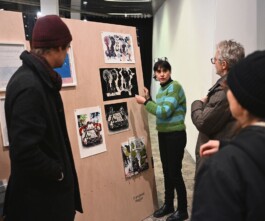
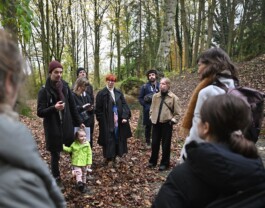
In the afternoon, Hassan of “Des Racines et des Ailes d’acier” guided us through the ruins of a decommissioned steel factory in Seraing, a neighbouring city of Liege. The site closed down 15 years ago and fell into ruin ever since. When we visited there were clear signs of transformation, with large machinery the former factory was cut into parts. Only the former heart, the 84-meter-high blast furnace will stay and become the center of an area were heritage and more sustainable industry will be combined. Before we headed to dinner, we visited the art center Les Brasseurs, were we got an introduction into the ATI Collection, a private library that collects works from illustrators of children books and youth literature. Later on, quite tired but still motivated, Maxime Moinet guided us through the city, exploring the various spots of Art-au-Centre, an initiative that transforms empty shops into exhibition spaces.
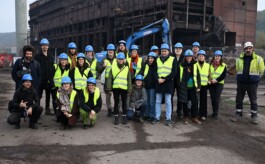
November 14th
On 14th of November the field trip continued with a visit to Les Chiroux, a citizen association, that tries to combat gentrification by keeping a social and cultural function to the large building complexes of a former library. After that we visited the studio of Sophie Langohr, who gave an introduction to her work, in which she combines historical images, for example from the religious past of Liege, with contemporary photography. The last stop was the Eben-Ezer Tower, constructed by Robert Garcet between 1948 and 1963. A modern castle, that was built as monument for peace but also functioned as a home for his family. With its stone sculptures and ornaments, it seems to be taken straight from a fantasy world.
Field Trip "Art and common good", November 13th/14th, 2024


Date
November 13th/14th, 2024
Industrial history on the one hand and an vibrant art scene on the other – our third field trip took us to the Belgian city of Liège. A place that, in the 18th and 19th century, was in the heart of the industrial revolution on the European continent. Industry made Liège a wealthy town, its smelters, furnaces and factories once were considered to be the city’s true cathedrals. Then, in the 1980s, decay set in. The companies moved away, leaving Liège heavily polluted and many residents unemployed. Until today, abandoned factories characterize the cityscape, and a kind of working-class mentality still seems to prevail. An aspect that is also reflected in Liège’s art scene, the existing cooperatives and the artists’ associations, which jointly manage studio spaces and workshops.


November 13th
We started our trip at Jacadi, a workspace of the artists cooperation CRC. Maxime Moinet and Julie Hanique gave us a warm welcome and introduced us to the ways of operating of this artists cooperation and the different needs it tries to meet within the local scene. Afterwards, we visited the Musée de la Métallurgie, to see some of the metalworking history of Liège. Apart from an introduction into the industrial past of Liege we also learned how sensitive this industrial past still is in the area. Industry shaped the face of the city in the past centuries, but this doesn’t mean that this history is necessarily getting much attention or care.



In the afternoon, Hassan of “Des Racines et des Ailes d’acier” guided us through the ruins of a decommissioned steel factory in Seraing, a neighbouring city of Liege. The site closed down 15 years ago and fell into ruin ever since. When we visited there were clear signs of transformation, with large machinery the former factory was cut into parts. Only the former heart, the 84-meter-high blast furnace will stay and become the center of an area were heritage and more sustainable industry will be combined. Before we headed to dinner, we visited the art center Les Brasseurs, were we got an introduction into the ATI Collection, a private library that collects works from illustrators of children books and youth literature. Later on, quite tired but still motivated, Maxime Moinet guided us through the city, exploring the various spots of Art-au-Centre, an initiative that transforms empty shops into exhibition spaces.

November 14th
On 14th of November the field trip continued with a visit to Les Chiroux, a citizen association, that tries to combat gentrification by keeping a social and cultural function to the large building complexes of a former library. After that we visited the studio of Sophie Langohr, who gave an introduction to her work, in which she combines historical images, for example from the religious past of Liege, with contemporary photography. The last stop was the Eben-Ezer Tower, constructed by Robert Garcet between 1948 and 1963. A modern castle, that was built as monument for peace but also functioned as a home for his family. With its stone sculptures and ornaments, it seems to be taken straight from a fantasy world.